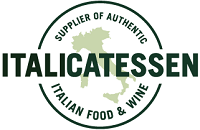Pecorino Romano DOP
Two thousand years of history
Pecorino Romano is one of the most ancient cheeses in the world. Its history starts more than 2,000 years ago in Lazio, in Rome area, from which it take its name. Pecorino Romano was an important element at the basis of the Ancient Romans' diet. According to ancient documents, thanks to its nutritional and energetic properties and its long shelf life, Pecorino Romano was used by Legionaries as a food supplement to give them strenght and energy during the long marches.
Pecorino Romano PDO is an authentic Italian product, expression of the unique craftmanship and know-how of Italian cheesemaker.
The production of Pecorino Romano PDO
Pecorino Romano is made with sheep's milk coming from pastures located in the designated production are only. The production of Pecorino Romano PDO takes place only in Sardinia (where 90% of the total production is made), Lazio region and the province
of Grosseto in Tuscany. All the production phases are strictly regulated by the Consortium of Pecorino Romano DOP to safeguard the authenticity and unique characteristics of the product.
Pecorino Romano production phase takes place beween October and July, when the milk coming from local farms is transferred to the daries soon after being milk. The milk is placed in large cauldrons, where whey is added. It now starts the coagulation
phase at a temperature of around 38°C - 40°C , thanks to the addition of lamb rennet coming from the same geographical area. The curd is then broken down by the master cheesemaker into small granules the size of a wheat grain. Once cooled, the mass
formed is put into special cheese moulds. This is the phase when the P.D.O trademark is stamped on the rind of the cheese, just before starting the final salting phase.
The aging period lasts for a minimum of 5 months, after which Pecorino Romano reaches the first stage of maturation and it is ready to be enjoyed as a table cheese. After 8 months, the paste becomes crumblier and the flavour more decise - charateristics
that make it perfect to be grated on pasta dishes.
Characteristics and taste
Pecorino Romano PDO wheels have a cylindrical shape, with flat bottom and top, and weigh around 20 - 35 kg. The rind is thin, with a straw-yellow colour. The texture is hard and compact, white / pale yellow in colour.
The taste is rich, aromatic and savoury, with slighlty piquant notes that become more predominant when aged for a longer period.
Pecorino Romano PDO is the kew ingredient of many Italian traditional dishes and recipes, including Spaghetti alla Carbonara, Bucatini all'Amatriciana and Spaghetti Cacio e Pepe.
Pecorino Romano DOP
Two thousand years of history
Pecorino Romano is one of the most ancient cheeses in the world. Its history starts more than 2,000 years ago in Lazio, in Rome area, from which it take its name. Pecorino Romano was an important element at the basis of the Ancient Romans' diet. According to ancient documents, thanks to its nutritional and energetic properties and its long shelf life, Pecorino Romano was used by Legionaries as a food supplement to give them strenght and energy during the long marches.
Pecorino Romano PDO is an authentic Italian product, expression of the unique craftmanship and know-how of Italian cheesemaker.
The production of Pecorino Romano PDO
Pecorino Romano is made with sheep's milk coming from pastures located in the designated production are only. The production of Pecorino Romano PDO takes place only in Sardinia (where 90% of the total production is made), Lazio region and the province
of Grosseto in Tuscany. All the production phases are strictly regulated by the Consortium of Pecorino Romano DOP to safeguard the authenticity and unique characteristics of the product.
Pecorino Romano production phase takes place beween October and July, when the milk coming from local farms is transferred to the daries soon after being milk. The milk is placed in large cauldrons, where whey is added. It now starts the coagulation
phase at a temperature of around 38°C - 40°C , thanks to the addition of lamb rennet coming from the same geographical area. The curd is then broken down by the master cheesemaker into small granules the size of a wheat grain. Once cooled, the mass
formed is put into special cheese moulds. This is the phase when the P.D.O trademark is stamped on the rind of the cheese, just before starting the final salting phase.
The aging period lasts for a minimum of 5 months, after which Pecorino Romano reaches the first stage of maturation and it is ready to be enjoyed as a table cheese. After 8 months, the paste becomes crumblier and the flavour more decise - charateristics
that make it perfect to be grated on pasta dishes.
Characteristics and taste
Pecorino Romano PDO wheels have a cylindrical shape, with flat bottom and top, and weigh around 20 - 35 kg. The rind is thin, with a straw-yellow colour. The texture is hard and compact, white / pale yellow in colour.
The taste is rich, aromatic and savoury, with slighlty piquant notes that become more predominant when aged for a longer period.
Pecorino Romano PDO is the kew ingredient of many Italian traditional dishes and recipes, including Spaghetti alla Carbonara, Bucatini all'Amatriciana and Spaghetti Cacio e Pepe.

